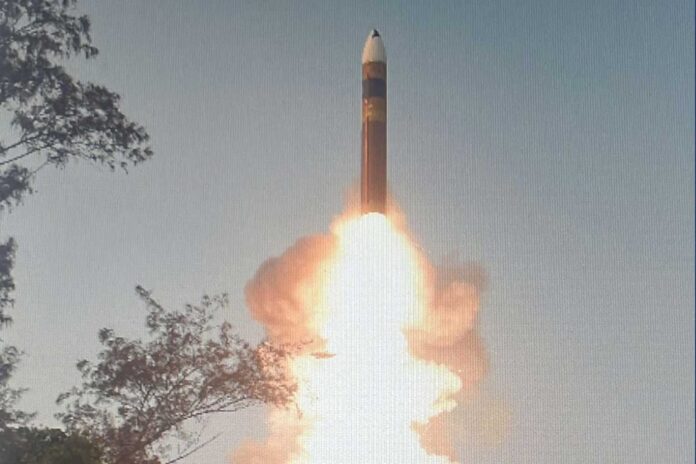On March 11, the Defense Research and Development Organization (DRDO) of India successfully completed the inaugural flight test of its domestically developed Agni-V missile equipped with Multiple Independently Targetable Re-Entry Vehicle (MIRV) technology, marking a significant milestone in India’s defense capabilities.
Dubbed Mission Divyastra, the test was carried out from Abdul Kalam Island, situated off the coast of Odisha. The mission’s progress was meticulously tracked and monitored by an array of telemetry and radar stations, confirming that the objectives were fully achieved. In response to this landmark achievement, Prime Minister Narendra Modi, Defense Minister Rajnath Singh, and other senior officials extended their congratulations to the DRDO team for their successful endeavor.
The successful demonstration of MIRV technology positions India among a select group of nations, including the United States, United Kingdom, Russia, France, and China, capable of deploying this sophisticated missile system. MIRV technology allows a single missile to deliver multiple nuclear warheads to various targets, significantly enhancing the strategic military advantage.
The Agni-V, which has a declared range of 5,000 km, falls within the category of intermediate-range ballistic missiles (IRBMs). However, reports suggest its actual range might extend to 8,000 km, potentially classifying it as an intercontinental ballistic missile (ICBM). Analysts predict that the MIRV-equipped Agni-V could carry four to six warheads, with some sources indicating a capacity for up to 12 warheads, along with decoys to confuse enemy defenses.
This technological advancement is seen as a boost to India’s nuclear deterrence capabilities, although experts note that further testing is necessary to fully operationalize MIRV technology for the Agni-V missile.
In line with international protocols, specifically the Hague Code of Conduct against Ballistic Missile Proliferation (HCOC), India notified relevant nations and maritime traffic ahead of the test. The Indian Navy also deployed ships in the southern Indian Ocean to assist in monitoring the test’s impact.
The Agni-V missile has undergone several tests since 2012, including a notable night trial in December 2022. Defense officials have highlighted significant advancements in reducing the missile’s weight, potentially extending its range beyond 7,000 km through the use of composite materials and advanced technologies.
Despite the clear strategic advantages, the development of MIRV technology presents challenges, including the miniaturization of nuclear warheads and the enhancement of guidance systems. However, India’s progress in these areas, including the development of indigenous avionics and sensor technologies, indicates a robust capability in precision targeting.
India’s advancement in missile technology comes amid growing regional tensions and an arms race, particularly with China’s nuclear expansion. This development underscores the dynamic and complex nature of international security, with implications for strategic stability in South Asia and beyond.










